Art Guides
We Asked 10 Art Industry Savants to Share the Top Artists Residencies Around the World. Here’s What They Told Us
Insiders shared the best 35 residencies globally and told us why they're worth it.
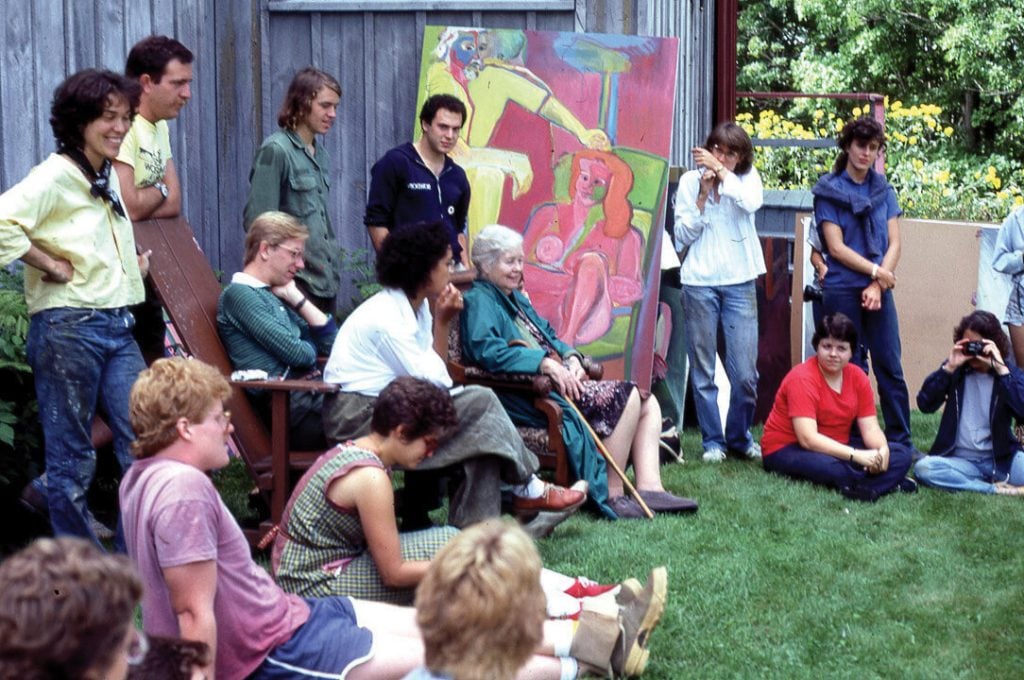
Insiders shared the best 35 residencies globally and told us why they're worth it.

Devorah Lauter

Whether starting one’s art career or entering a more established stage, artist residencies can offer valuable resources and professional connections in a mostly opaque art world, not to mention time to focus on making work.Finding the right fit can depend on key factors: financial benefits, covered costs, what is asked of the participating artist, and what kind of exposure a program offers to the regional and international art crowd. Often, what may seem like an attractive place to work may end up including additional pressures to donate work or considerable time in exchange for the costs of running a program. This needs to be weighed individually by artists.
With the above in mind, we asked international arts professionals for their residency recommendations, compiling a selection of their picks complemented with our own research. We heard from curator and former director of the Centre Pompidou in Paris Bernard Blistène; Carolyn Christov-Bakargiev, former director of the Castello di Rivoli Museum of Contemporary Art; Delinda Collier, dean of Graduate Studies at the School of the Art Institute of Chicago; artist Nathanaelle Herbelin; Angelica Mesiti, a Paris-based Australian who represented Australia at the 58th Venice Biennale; Hans Ulrich Obrist, artistic director at London’s Serpentine Galleries; Laura Phipps, associate curator at the Whitney Museum of American Art; Jessica Silverman, founder of the eponymous, San-Francisco-based contemporary art gallery, Cortney Stell, the Executive Director and Chief Curator of Denver-Based art museum Black Cube; and Berlin and Stockholm-based artist Anna Uddenberg.
Below is our definitive roundup.
Comprehensive and Prestigious
These renowned and generously subsidized residencies offer some of the most comprehensive benefits, including accommodation for artists with families. As full-life model residencies, they are designed to make working as an artist anything but a hardship.
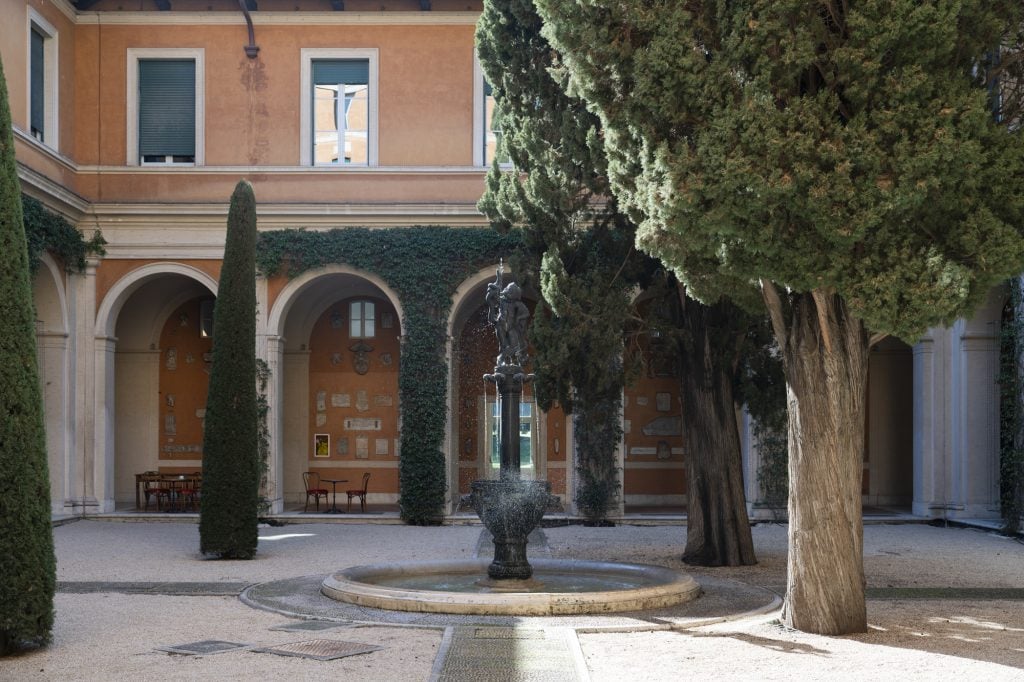
Photo by Claudia Gori, courtesy of the American Academy in Rome, 2024.
Rome Prize, the American Academy in Rome, Italy
The Rome Prize fellowship is one of the most prestigious and generous artist residencies. About 30 American scholars and artists are awarded the prize each year, and they receive free lodging, meals, a studio, and a stipend of $30,000 for full-term fellowships.
Previous selected artists include Sarah Oppenheimer, Nari Ward, and Elle Pérez, to name but a few. Fellowships, which typically run from September to June (with half-term options available), are granted in a variety of disciplines, from ancient studies, architecture, historic preservation and conservation, literature, and, of course, visual arts. The American Academy in Rome is also one of a few notable artist residencies that accommodate families and subsidize additional costs for their accommodations and meals.
Tulsa Artist Fellowship, Tulsa, Oklahoma
Ten fellows are selected annually for this incredibly comprehensive program and $150,000 is granted to participants over three years, plus $12,000 annually for housing; there is additional funding for health, a studio assistant, childcare, and a relocation stipend. Studios are fully subsidized, with access to a ceramics studio, woodshop, media lab, roof terrace, performance and rehearsal space, and more. The program is also fully integrated into the local gallery and cultural scene. During the three-year residency, participants are expected to “actualize” a proposed project, which can be in any artistic field or medium.
Camargo Foundation, Cassis, France
The Camargo Foundation is located on a stunning site on the edge of the Mediterranean Sea, offering 18 residents €350 per week, plus funding for basic transportation. Partners and children of fellows are also welcome, and studios are available, but the foundation is research-based, rather than production-focused.
Nature and Climate Concerns
The climate crisis and our relationship with nature are focuses in several recommended residencies, which are often located in areas more directly impacted by environmental changes.
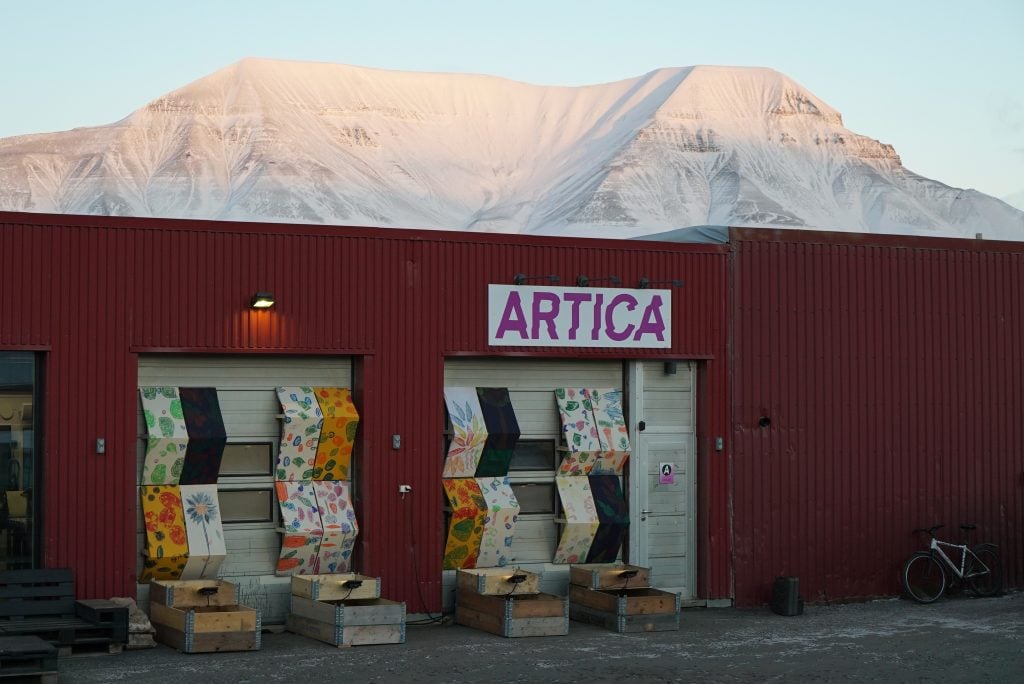
Artica Svalbard residency in Longyearbyen, Norway. Photo courtesy of Artica Svalbard
Artica, Svalbard, Norway
As one of Norway’s leading residency foundations, based in Longyearbyen, Svalbard, Artica seeks to raise awareness around the Arctic region and offer a platform for challenging debate on topics such as climate change, geopolitics, and migration. Residents are encouraged to be actively involved with the local community life, in the hopes of creating lasting bonds beyond the residency.
Networking opportunities are also provided via close partnerships with the Nordnorsk Kunstmuseum, the Norwegiona Nonfiction Writers’ and Translators’ Association (NFFO), the Office for Contemporary Art Norway (OCA), and the Queen Sonja Print Award. Private accommodation and shared studio space are provided for one-to-three-month residencies.
Jan Van Eyck Academie Residency, Maastricht, The Netherlands
Forty-five international participants are welcomed to this 11-month residency each year—invitees include artists but also designers, graphic artists, as well as those from realms beyond art, including fashion and cuisine.
There are five thematic labs: Food, Materials Matters, Photography & Audiovisual, Printing & Publishing, and Future Materials. The residency particularly emphasizes exploring creative practices that consider the climate crisis. Guest advisors and staff guide the participants, who each pay an enrollment fee of €2,750/year excluding tax; they receive a monthly stipend of €1,000, plus €2,000 annually for production costs. A private studio is provided, but not housing.
The Headlands Center for the Arts, Golden Gate National Recreation Area, Marin Headlands
This cluster of former army barracks is nestled on a coastal, natural haven just north of the Golden Gate Bridge, in the Marin Headlands. Through residency programs, fellowships, and awards, artists are given resources, space, and recognition. Regular public events are hosted, including workshops, exhibitions, and nature walks. The ecological surroundings are an important part of the residency, but artist projects need not adhere to specific themes. The residency program is fully sponsored for some 50 international artists in all career stages for four to 10 weeks, including studio space, chef-prepared meals, housing, travel, and living expenses. The program’s three-year fellowship includes an annual stipend of $20,000, health insurance, a production budget, and access to resources.
Best of the Netherlands
Beyond the Jan Van Eyck Academy Residency, the Netherlands is known for its artist residencies.
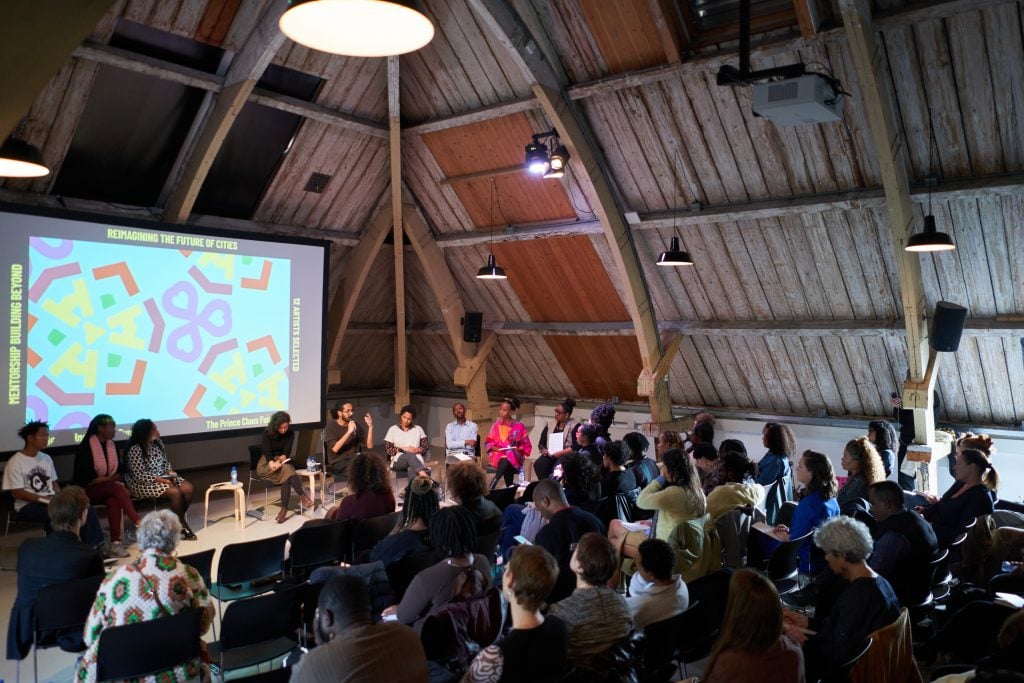
Rijksakademie, international artist residency for research and experiment. Photo by Tomek Dersu Aaron
Rijksakademie residency, Amsterdam
Without a “fixed program, dominant conception of style or ideology,” this residency founded in 1870 is both well-reputed and one of the more generous on offer. Lasting one to two years, up to 20 artists are welcomed at a time, and supported with a stipend of €14,000, a €2,500 production budget, a private studio, and subsidized meals. A range of advisors, including curators and artists are invited to engage with participants.
De Ateliers, Amsterdam
This well-connected residency lasts two years. Participants are given a private studio in central Amsterdam and benefit from regular studio visits by tutor artists and visiting guests. Subsidized apartments are available at affordable rates, which are deducted from a stipend of €15,864, along with a participation fee of €3,000. A production grant of €2,000 is also provided.
Affordable Footholds in Art Hubs
Finding housing and reasonable studio space in some of the world’s major art cities is a well-documented conundrum. Here are reputed residencies in these hubs.
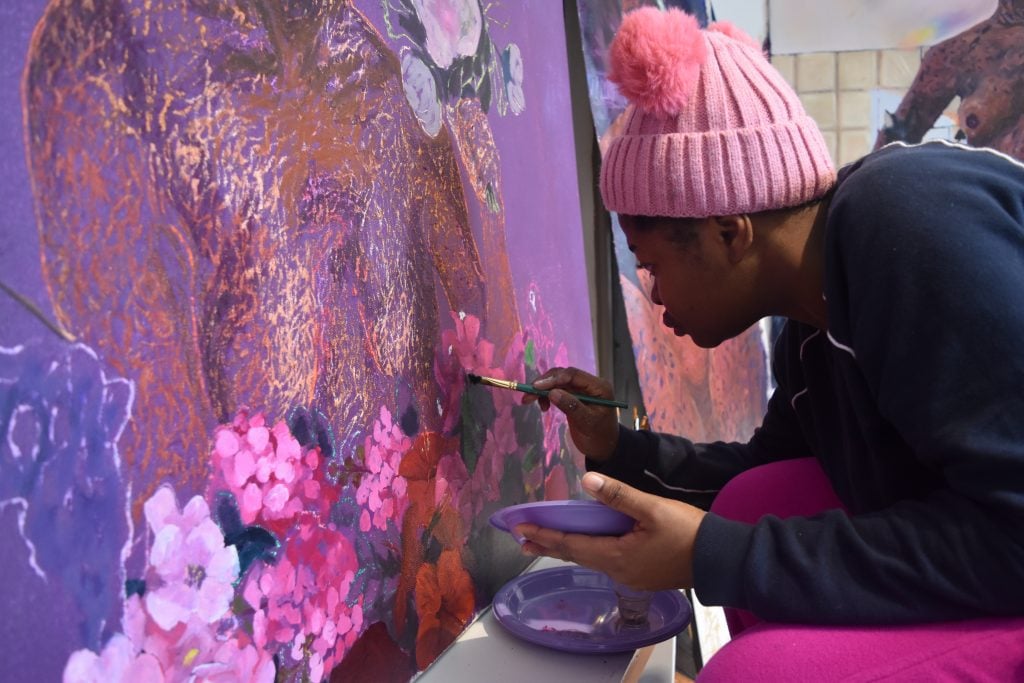
Artist-in-residence Crystal Yayra Anthony in her studio, 2024.Courtesy of International Studio & Curatorial Program (ISCP)
International Studio & Curatorial Program (ISCP), Brooklyn, New York
Billed as “New York’s most comprehensive international visual arts residency program,” the 1994-founded residency comes highly recommended, though equally competitive. The program’s hallmark, the “Visiting Critic” series introduces residents to professionals from museums, galleries, alternative spaces, and publications. The ISCP’s high-ceiling loft studios in a former, early industrial printing factory are spacious, and most sponsorships include stipends for living expenses, travel, materials, and housing, which can last from three months to a year.
The Whitney Independent Study Program (ISP), New York, New York
This distinguished study program is reputed for its theoretical approach, and boasts notable alumni, such as Julian Schnabel, offering a privileged inroad to leading art-world professionals, including curators from its eponymous institution, though the program maintains its independence. The ISP consists of three programs focused on the studio, critical studies, and curation, led by artist, theorist, or historian seminars, given in the past by Donald Judd, Brice Marden, Barnett Newman, and Roy Lichtenstein.
The ISP also has a new, permanent space: Lichtenstein’s former home and studio in Greenwich Village, donated by his estate and renovated by architects Johnston Marklee. The 11,000-square-foot, former metalworking shop can now accommodate modern artist studios, seminar and study rooms, outdoor spaces, and a third-floor artist-in-residence addition.
The Elizabeth Krief and Jacques Anardo Artist Residency Program at The Invisible Dog, Brooklyn, New York
This residency is designed to offer artists of all disciplines and nationalities the ability to live and work in New York City for one to three months without any final production obligation or objective “aside from engaging with our city of fantasy, change, excess, power, possibility, hustle, and grandeur.” Artists are housed in furnished apartments near The Invisible Dog Art Center and have opportunities to meet with art professionals and the vibrant art community.
Delfina Foundation, London
Located near Buckingham Palace, this well-regarded residency program for artists, curators, and writers previously focused on facilitating dialogue between U.K. and the Middle East and North African artists. Currently, the program does not have a geographical remit, but maintains a deep relationship with the Middle East, North Africa, and South Asia. The Foundation has also worked with partners to offer residency programs outside of London, in Brazil, Iraq, Syria, Spain, and more.
Participants are given opportunities to meet and engage with international artists, curators, and scholars via organized events, studio visit crits, mentoring, and meals. Awards vary, but a daily allowance and a production budget are provided, plus travel expenses.
Gasworks, London
The south London institution invites international emerging artists to live and work in London for three months. Residents are given a studio, a single room in the Gasworks Residencies House, basic living expenses, and transport in London. All programs include events, workshops, opportunities for research and support from staff.
DAAD Artists-in-Berlin Program, Berlin, Germany
One of the world’s most renowned international programs, 20 residencies a year are offered to established arts practitioners who wish to work in Berlin. They benefit from about a year of lodging, travel expenses, and healthcare coverage, with monthly grant installments for living expenses and rent.
The program also assists in exhibiting artwork, with past participants including Jorge Castillo, Daniel Spoerri, Christian Boltanski, and Nan Goldin, to name a few.
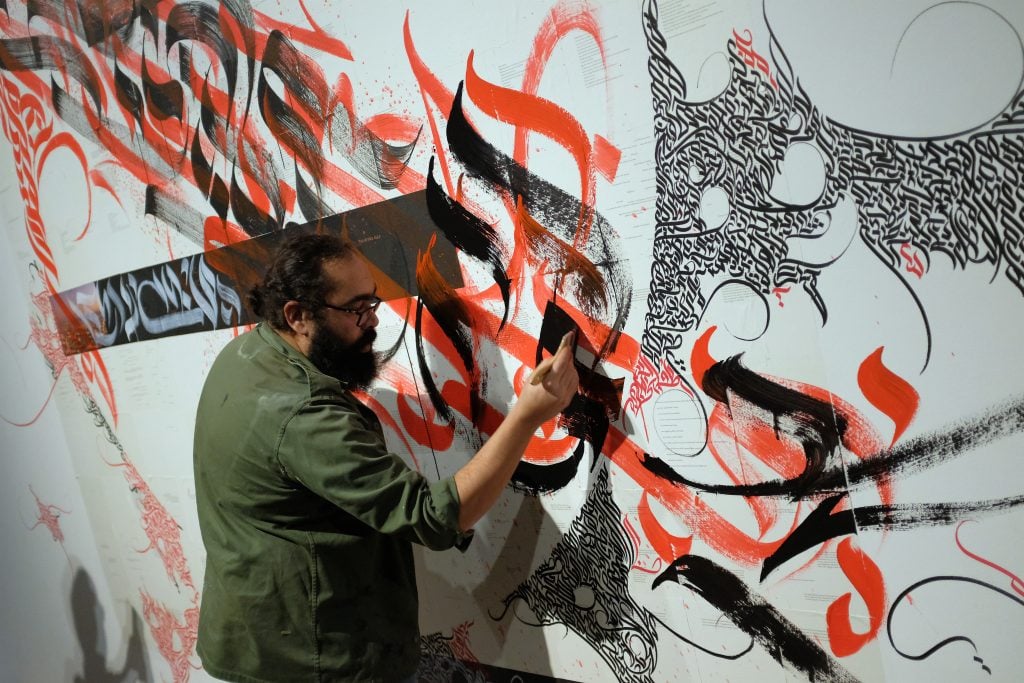
Palestinian calligraffiti artist Hamza Abu Ayyash paints his interpretation of poems by Syrian-Palestinian poet Ghayath Almadhoun at the DAAD Gallery on February 19, 2020 in Berlin, Germany. Almadhoun, who lives in Sweden, was a participant in the DAAD Artists In Berlin Program. (Photo by Sean Gallup/Getty Images)
Art Explora – Cité international des arts, Paris
Launched in 2021, this program for 20 annual artists, housed in the heart of Paris, is well connected to the city’s expanding art scene. The program invites residents to develop a project that addresses issues such as new tech, art and science, the environment, political, and social questions, but no final production is required. Studio apartments are located in Paris’ picturesque Montmartre district, and participants receive €1000 per month for three to six-month solo residencies, plus €3,000 for production, and travel.
Fountainhead Residency, Miami
For month-long residencies in this Miami program, artists are immersed in all the city’s art scene has to offer, while the residency itself is surrounded by lush tropical foliage and open space, near Biscayne Bay. Artists are introduced to curators, collectors, and gallerists in studio visits, as part of a robustly supportive environment. Roundtrip airfare, living and working accommodations and a stipend are provided, while financial and legal consultants are also available for guidance. Works by participants are made available for sale after a month.
Alserkal Residency, Dubai
This well-connected residency on Alserkal Avenue, in Dubai’s thrumming arts district, offers studio space, accommodation, and a stipend for transdisciplinary artists and scholars. Hosted by the Alserkal Arts Foundation, which also offers research grants, the program works in close collaboration with international artists, curators, and scholars, and offers a host of opportunities to engage with the regional arts community.
Renowned and Artist-Run
Artist-led and founded residencies have a rich history and can be a major boost to a resume. Here is a top-notch, small selection, many of which also emphasize communal interaction.
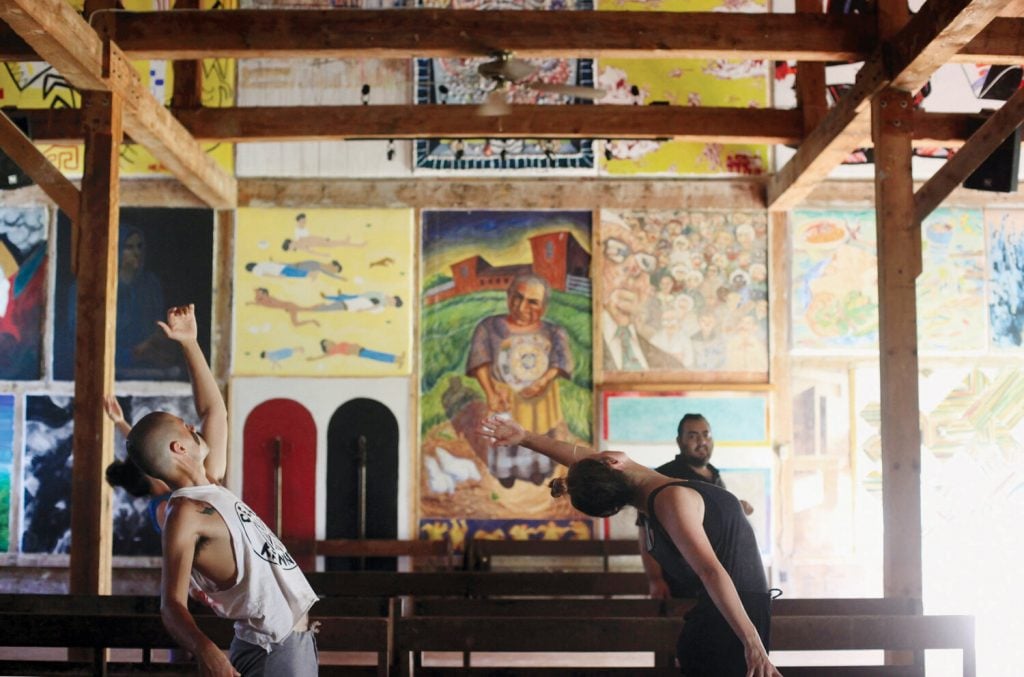
Ballet Class in Fresco Barn, 2013 / Courtesy of Skowhegan
Skowhegan School of Painting & Sculpture, Maine
One of the U.S.’s most sought-after artist residencies founded after World War II, the program is still run by artists and accepts some 65 emerging artists out of some 2,000 applicants. Located on 330 acres of land near Lake Wesserunsett, the intensive, nine-week residency draws visiting artists, who, along with resident faculty, make studio visits and give lectures that have been cataloged in the iconic Skowhegan Lecture Archive, which can be found in several U.S. museums.
The program also has close relationships with schools and institutions outside dominant art-world centers. A $6,000 tuition fee can be largely offset by financial aid opportunities, and housing in converted lakeside cottages, food, and studio space is provided. The campus includes a library, a media lab, as well as a large wood and metal shop with basic ceramic facilities.
Bemis Center for Contemporary Arts residency, Omaha, Nebraska
Founded in 1981 by artists, this acclaimed international residency and exhibition space for artists and curators offers a fully subsidized live and work program. Artists enjoy generous studio and living spaces, a monthly stipend and travel expenses, plus access to facilities such as the Okada Sculpture & Ceramics Facility for large-scale production, and a sound studio. Presentations and open studious are optional to artists, and the program is a great place to meet and network with fellow arts professionals.
Fine Arts Work Center, Provincetown, Massachusetts
This acclaimed artist-led organization founded in 1968 offers seven-month residencies for emerging artists and writers, a summer workshop program, an online writing program, plus studio visits and manuscript reviews with artists and writers, as well as events and exhibitions. There are 20 fellowship residency spots, with many having gone on to win prestigious prizes such as MacArthur and Guggenheim Fellowships, the Nobel Prize, or exhibiting their work in the Venice Biennale, the Museum of Modern Art, and many more. Fellows receive an apartment, a studio for artists, and a monthly stipend of $1,250, plus an exit stipend of $1,000.
Former Artist Homes
The historic, former homes of renowned artists make for inspiring artist residencies.
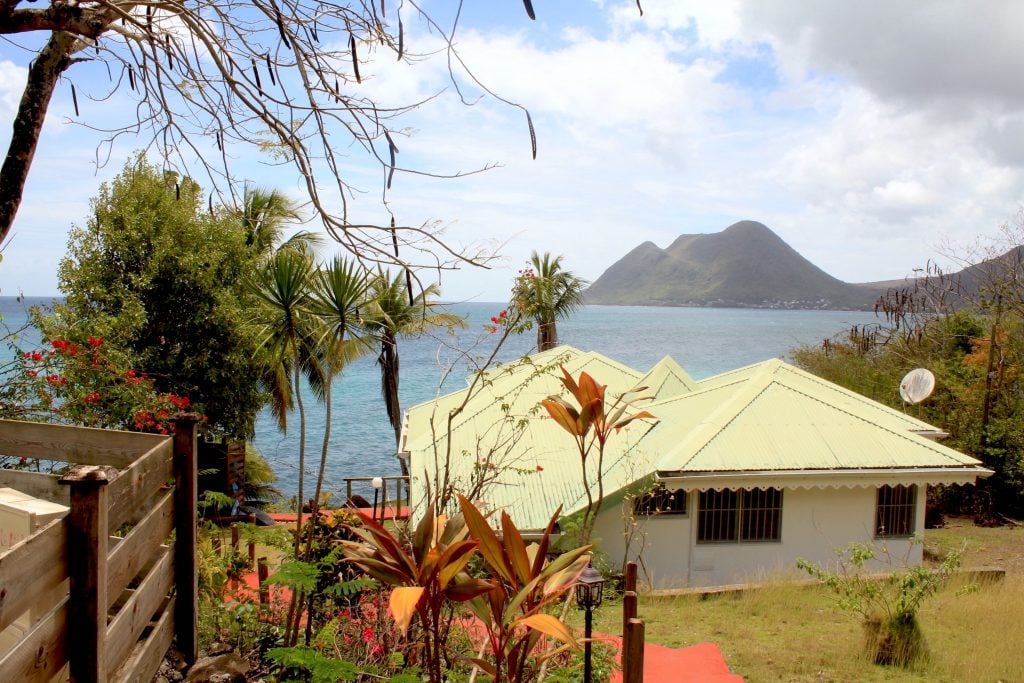
Edouard Glissant Art Fund & All rights reserved.
Edouard Glissant Art Fund, Residency, Martinique
This artist residency was inaugurated earlier this year to honor the writer, philosopher, and poet who lived on this island home-turned-residency from 1928 to 2011. The fund boasts an impressive scientific committee of curators and artists, including Tarik Kiswanson, Nathalie Bondil, Hans Ulrich Obrist, and the sculptor Melvin Edwards. Julien Creuzet, currently representing France at the Venice Biennale, was selected as its first participant. The seaside home can accommodate seven to 10 residents per year, with a monthly stipend of €2,000, and travel costs covered to the island.
MacDowell residency, Peterborough, New Hampshire
Founded on the former farm of composer Edward MacDowell and pianist Marian MacDowell, this acclaimed residency includes an unbeatable list of former participants, from James Baldwin, Audre Lorde, Leonard Bernstein, to Ta-Nehisi Coates. The 32 studios provided are kept private, with many located out of sight of each other, surrounded by 450 acres of woodlands and fields.
The Tenney Farm home building has also been renovated to provide additional, private dormitories. Participants can meet fellow residents at communal meals, and often artists share information about their work after dinner. However, individual autonomy is carefully balanced with social interaction at this residency, where lunch is traditionally brought to artists in their studios, and participants are asked not to visit other studios without an invitation. Admission is free and includes accommodation and food.
Rauschenberg Residency, Captiva Island, Florida
Artists chosen for this bucolic, prestigious residency can stay in Robert Rauschenberg’s former property on Captiva Island, Florida, where he lived and worked for nearly four decades. The facility includes a massive studio Rauschenberg had built and a collection of historic homes and studio space. The residency is by invitation and lasts for four and five weeks.
Residencies at Museums
Residencies offered by museums can be great ways to connect with an institution’s curatorial staff and to immerse oneself in their program.
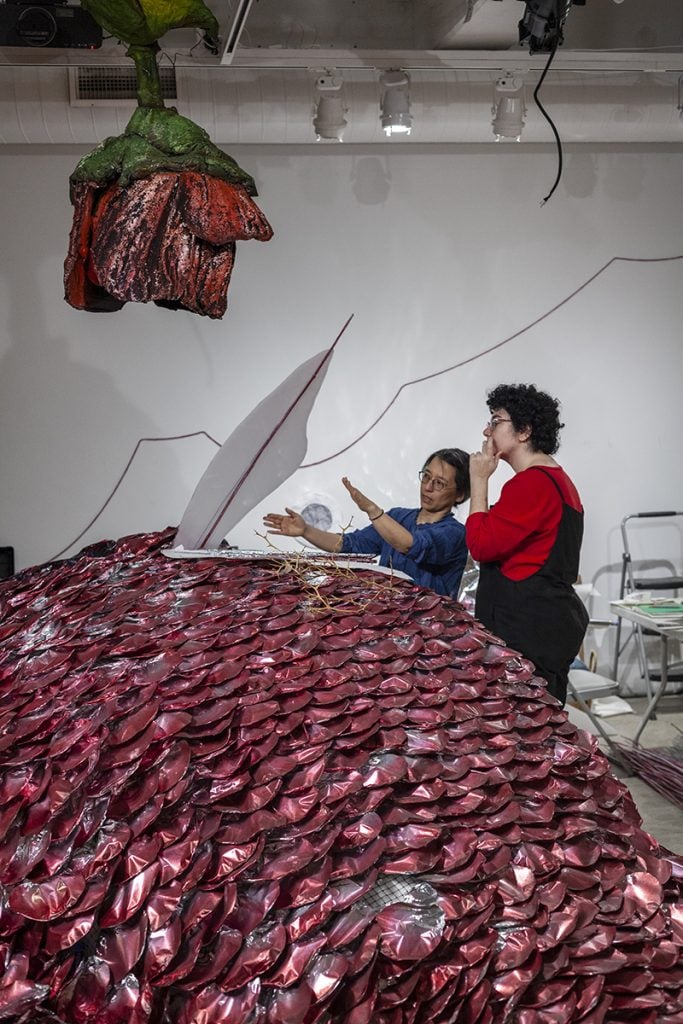
Director of Studio Operations, Nami Yamamoto (at left), discusses plans for the fin of a red snapper sculpture with Project assistant Hannah Moog. John Jarboe, in collaboration with The Fabric Workshop and Museum, Philadelphia. The Rose Garden, 2024. Photo credit: Carlos Avendaño
Artist-in-Residence (AIR) Program, The Fabric Workshop and Museum (FWM), Philadelphia, PA
This internationally acclaimed contemporary art museum and residency program offers opportunities by invitation only for artists at all stages in their careers to collaborate and experiment. Originally focused on fabric as a medium, the program has widely expanded, with research and construction occurring on-site. The AIR Program, strongly supported by studio staff, “serves as the creative nucleus of FWM and the genesis of the museum’s groundbreaking exhibition program,” states their website. Past residents have included Marina Abramovic, Doug Aitken, Lousie Bourgeois, and Felix Gonzalez-Torres.
The Massachusetts Museum of Contemporary Art (MASS MoCA) Artists-in-Residence, North Adams
This museum and performing arts venue also hosts an acclaimed residency, with extensive infrastructure and professional support. Past participants have included William Kentridge, Helga Davis, Laurie Anderson, and many more. Studios are located in the museum’s factory campus and surrounded by the Berkshire Mountains. Up to 10 artists are hosted for two to four weeks, and many full-ride fellowships are granted. The general program includes private studio space, housing across from the museum, one communal meal per day, optional studio visits with a MASS MoCA curator, and more.
Studio Museum in Harlem Artist-in-Residence Program, New York, New York
This 11-month residency comes equipped with a $25,000 stipend, studio space, and a group exhibition. The institution offers one of the more renowned residency programs for artists of African and Afro-Latinx descent, with past participants including David Hammons, Kerry James Marshall, and Njideka Akunyili Crosby.
The Neon Museum’s Artist Residency (AIR), Las Vegas, Nevada
This residency is designed to expand the potential of the museum collection, offering a selected artist the opportunity to create a work inspired by the museum’s historic sign collection and the Las Vegas cultural context, with community engagement as an integral component. An honorarium of $2,500, plus a materials stipend of $4,000, travel, accommodation, and studios are provided, along with curatorial support. The residency culminates with a solo exhibition by the participant.
LUMA Arles residency program, Arles, France
This prestigious residency, which has been known to invite more established artists in the past, is a golden opportunity to work closely with the professional arts community at the LUMA arts center in Arles, France, headed by arts patron Maja Hoffmann. Here massive contemporary art collection is on rotating view at the center. Past recipients include Precious Okoyomon and Mohamed Bourouissa, to name a few.
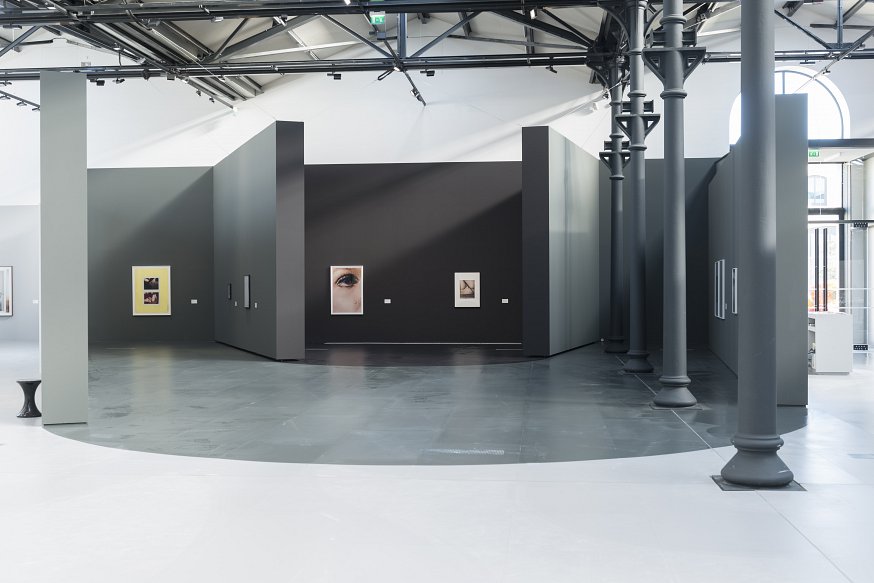
Installation view of “Systematically Open?” Collier Schorr – Anne Collier at Luma Arles. Courtesy LUMA Foundation. Photo Lionel Roux
Industry and the Arts United
Some active, industrial spaces have opted to collaborate with artists, and offer well-reputed residencies that invite artists to use their large-scale workspaces and extensive equipment to make their own work.
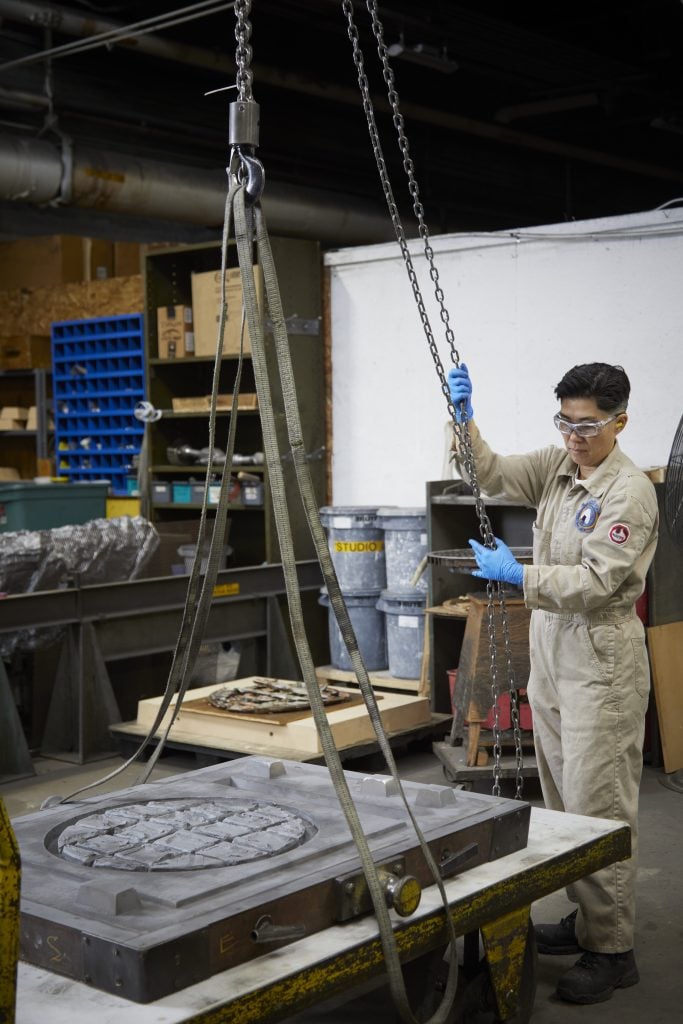
Arts/Industry artist-in-residence Ginger Brooks Takahashi in the Kohler Co.
Foundry, 2023. Photo: Kohler Co., courtesy of John Michael Kohler Arts
Center.
Arts/Industry John Michael Kohler Arts Center residency program, Sheboygan, WI
Hosted and funded by the for-profit plumbing ware company, Kohler Co., this residency offers a remarkable collaboration between industry and art, administered by the John Michael Kohler Arts Center. Skilled craftspeople who work for Kohler Co. work in tandem with artists to help them create works in clay, metal, and other materials at large scale, in the Kohler Co.’s Pottery and Foundry.
“Residents are exposed to a body of technical knowledge that enables and encourages them to explore new ways of thinking and working,” states the program. Housing, round-trip transportation, and a modest weekly stipend are provided along with full access to studio space and industrial equipment. Artists are also required to donate some works they created during the program.
Cerámica Suro, Guadalahara, Mexico
This design workshop and factory originally produced dinnerware and other decorative objects, but in the 1990s, in addition to its production, owner José Noé Suro began inviting artists to use their facility for creative experimentation with clay, both in design collaborations and in the context of their own work in a residency program. The studio has made public works for the Hammer Museum, the Guggenheim Museum, and more.
Community Engagement and Social Intervention
Increasingly, residencies encourage direct involvement with the surrounding community, via projects that aim to address local challenges.
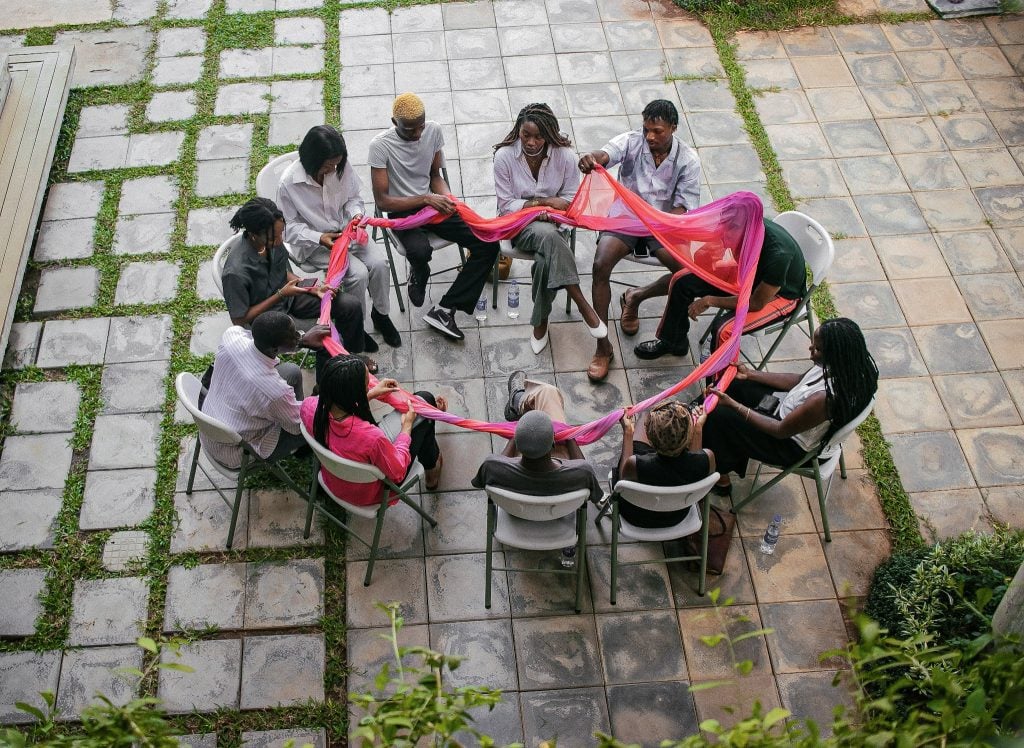
A movement workshop hosted by Raymond Pinto during their residency. Courtesy of G.A.S. Foundation
Guest Artists Space (G.A.S) Foundation, Yinka Shonibare Foundation, Nigeria
Founded by British-Nigerian artist Yinka Shonibare, the recently inaugurated live and work artist residency program includes two sites, one in Lagos and one on a rural farm in Ijebu, Ogun State. Part of the artist’s eponymous foundation, the program aims to cultivate the local art scene, as well as the broader ecosystem and sustainable farming.
“The point of all this is to help develop food security and sustainability in an area where unemployment is high and food supply is precarious. Bringing people to the farm, for arts events as well as residencies, should also provide a boost for the local economy,” stated Shonibare.
Fundación Casa Wabi, Puerto Escondido, Mexico City, and Tokyo
Located in three different places, this association aims to foster social development and dialogue between local communities through the arts via residencies, exhibitions, clay, film, and mobile libraries. The main headquarters between the mountains and the Pacific coast in Puerto Escondido Oaxaca, were designed by Japanese architect Tadao Ando. The foundation has opened a Clay Pavilion by architect Alvaro Siza, a Chicken Coop by architect Kengo Kuma, and recently the High Temperature kiln and gardens by Alberto Kalach. Lodging, studio space, and meals are provided, along with up to $500 for a community project.
Tech-focused
New technology and media labs are often available at more comprehensive residencies, but some are uniquely dedicated to digital arts.
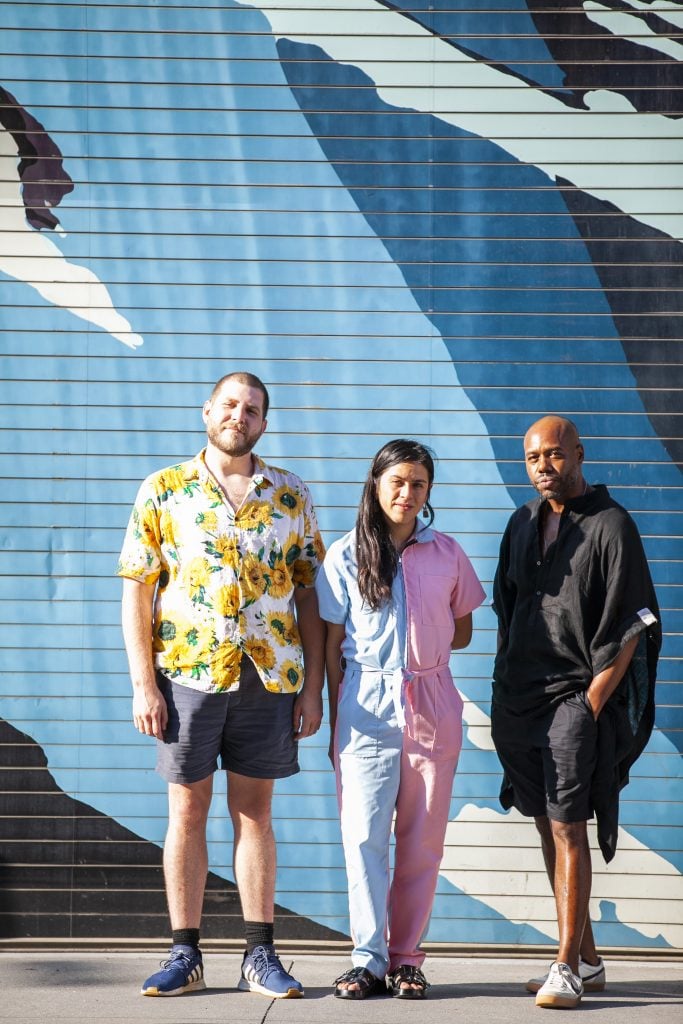
Eyebeam 2021-2022 Democracy Machine Fellows Roo DeLesslin George-Warren, Seba Calfuqueo, and Marton Robinson. Photograph by Whitney Legge, @whitney.legge.
Eyebeam, New York, New York, and online
This “digital-first” organization, including hybrid in-person/online fellowships, fosters artists who explore the creative potentials of technologies that support human imagination and intelligence. “Adopting a human-centric approach to technology, led by artists, can ensure that future technology is developed and used to promote human well-being and agency, rather than corporate consumption,” states the website.
No Strings Attached
Whenever a residency announced that no final project was required, our ears perked up.
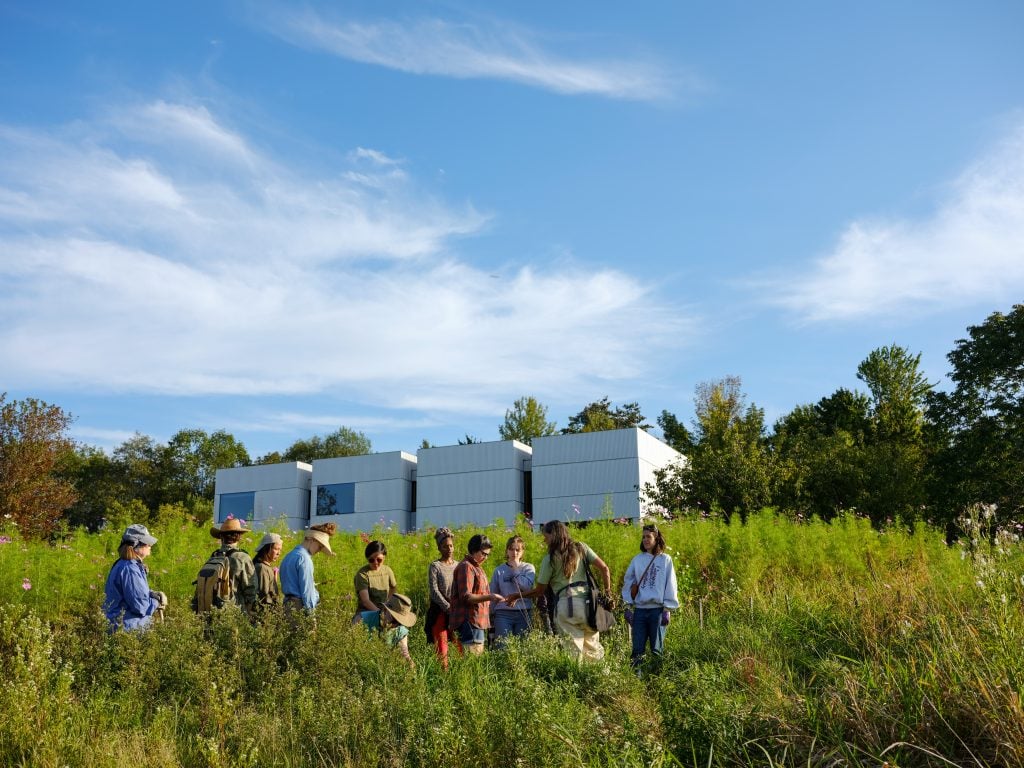
Forge Project’s main residence. photo credit Alekz Pacheco
Forge Project Fellowship, Taghkanic, New York
The Forge Fellowship aims to support six Indigenous culture workers at a time, including those working in art, food, land justice, law, and “decolonial governance.” It offers $25,000 and three weeks of accommodation in Ai Weiwei-designed structures, located in New York’s Hudson Valley, land the organization notes was unceded by the Muh-he-con-ne-ok people. There is no requirement to complete a project. Past recipients have included Sky Hopinka, Laura Ortman, and Sara Siestreem. The Forge Project also has an art collection, library, public programs, an art gallery, and studios, as well as living spaces throughout its 60-acre campus.
Onassis AiR, Athens, Greece
This relatively new residency and fellowship invites 30 artists, curators, designers, chefs, and all manner of creative practitioners to spend up to three months in Athens, Greece, where they can participate in networking events and opportunities to engage with the local art scene. A monthly artist’s fee of €1,300 is awarded, plus a budget for research, housing, and travel to Athens.